Join Our Groups
TOPIC 1: TRANSPORTATION
Transportation
The Meaning of the Term Transportation
Define the term transportation
Transport or transportation is the movement of people, animals and goods from one location to another. Modes of transport include air, rail, road, water, cable, pipeline and space. The field can be divided into infrastructure, vehicles and operations. Transport is important because it enables trade between people, which is very essential for the development of civilizations.
Transport infrastructure consists of the fixed installations including roads, railways, airways, waterways, canals and pipelines and terminals such as airports, railway stations, bus stations, warehouses, trucking terminals, refuelling depots (including fuelling docks and fuel stations) and seaports. Terminals may be used both for interchange of passengers and cargo and for maintenance.
Vehicles travelling on these networks may include automobiles, bicycles, buses, trains, trucks, people, helicopters, watercraft, spacecraft and aircraft. Operations deal with the way the vehicles are operated, and the procedures set for this purpose including financing, legalities and policies. In the transport industry, operations and ownership of infrastructure can be either public or private, depending on the country and mode.
Passenger transport may be public, where operators provide scheduled services, or private. Freight transport has become focused on containerization, although bulk transport is used for large volumes of durable items. Transport plays an important part in economic growth and globalization, but most types cause air pollution and use large amounts of land. While it is heavily subsidized by governments, good planning of transport is essential to make traffic flow and restrain urban sprawl.
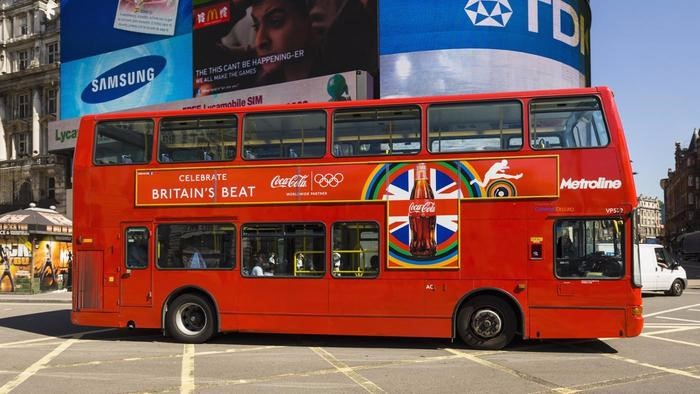
ESSENTIALS OR ELEMENTS OF TRANSPORT SYSTEM
- The way. Natural ways are cheap and free, and have no maintenance costs unless we try to improve them artificially. The sea, the air, the rivers, and footpaths are all natural ways. Being natural they are subject to the whims of nature, and this often requires, that they be improved artificially. Rivers are subject to controls to prevent flooding in wet periods and insufficient flow in dry periods.They are dredged to maintain a channel and locks are built to improve navigation in the upper reaches, Bridle paths are made up and turned into roads. Highways and motorways, canals, railways, tramways tunnels, and monorails are similarly constructed. Clearly these are not free' like may be borne socially rather than privately. If the costs are borne by the ratepayer and taxpayer we may have what is an apparently free way built the owner usually has sole use of it. This owner then charges for its use by other persons, to recoup the capital costs.
- The unit of carriage. Whatever we call it, some vehicle or craft must be used in transport. The efficiency of the mode of transport depends to some extent on the flexibility and adaptability of the unit of carriage used. Road vehicles are adaptable than railways rolling stock because they are not entirely tied to the way: aircraft and ships are even less tightly bound by the way on which they travel.Even a pipeline can be considered as unit of carriage. It is not very adaptable in its behaviour: we cannot expect it to carry gas until noon, milk from noon till 3 p.m., and petrol from 3 p.m. to midnight. In choosing our method of transport the adaptability of the unit of carriage will be a major consideration.
- The motive power unit. Every vehicle must be driven and the choice of a propulsion unit depends upon the strength of the vehicle, the speed required, the available fuel, and other factors. Today the steam engine, the first great prime mover, has been largely replaced by the petrol engine, the jet engine, the diesel engine and the electric motor.
- The terminal. Nearly every journey involves junctions where we can transfer from one form of transport to another. A port is usually regarded as a terminal for ships, but in fact it is also a terminal for trains, roads, pipelines, and aircraft.
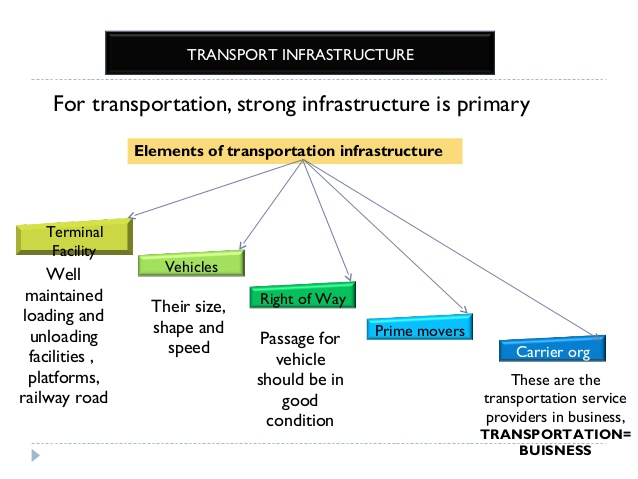
IMPORTANCE OF TRANSPORTATION
- Makes available goods to customers: Transport makes possible movement of goods from one place to another with great ease and speed. Thus, consumers spread in different parts of the country have the benefit of consuming goods produced at distant places.
- Helps in creation of employment: Transport provides employment opportunity to individuals as drivers, conductors, pilots, cabin crew, captain of the ship, etc. who are directly engaged in transport business. It also provides employment to people indirectly in the industries producing various means of transport and other transport equipments.
- Transport is a key necessity for specialization—allowing production and consumption of products to occur at different locations. Transport has throughout history been a spur to expansion; better transport allows more trade and a greater spread of people. Economic growth has always been dependent on increasing the capacity and rationality of transport.
- Transport improvement is not always the best way to improve productivity or increase economic development. In general, such improvements only increase economic development where inadequate transport is a significant constraint on economic activity. An area that lacks paved roads may experience significant economic growth from a new highway or bridge that significantly reduces travel costs, but once an area has basic highway access, each increase in highway capacity tends to provide less overall benefit.
- Price stabilization: by transporting goods from place of scarcity, various means of transport help in the equalization of price of goods and services in many places.
FEATURES OF GOOD MEANS OF TRANSPORT
- Adequate
- Safe
- Economical
- Reliable
The Different Modes of Transport (Road Transport, Railway, Water, Air and Pipe-line)
Explain the different modes of transport (road transport, rail way, water, air and pipe-line)
MODE OF TRANSPORT: is a term used to distinguish substantially different ways to perform transport. The most dominant modes of transport are aviation, ship transport, and land transport, which includes rail, road and off-road transport. Other modes also exist, including pipelines, cable transport, and space transport. Human-powered transport and animal-powered transport are sometimes regarded as their own mode, but these normally also fall into the other categories. Each mode of transport has a fundamentally different technological solution, and some require a separate environment. Each mode has its own infrastructure, vehicles, and operations, and often has unique regulations. Each mode also has separate subsystems. A subsystem is a group of many parts that make up one part. All modes of transportation have 6 subsystems: Propulsion, Suspension, Control, Guidance, Structural, and Support. Transport using more than one mode is described as intermodal. Transportation that carries around many people and can be used by the public is known as Mass Transportation.
Generally there are three forms of transportation:
1. Land transport: also referred to as ground transport or ground transportation, is the transport or movement of people, animals, and goods from one location to another on land, usually by rail or road. Involves roads, railways, and pipeline.
The Advantages of Each of the Modes
Point out the advantages of each of the modes
Road transport: involve the use of vehicles, bicycles and motorcycles in moving of goods and passengers. The video below summarizes all about road transport.
Importance of road transport
- Less Capital Outlay: Road transport required much less capital Investment as compared to other modes of transport such as railways and air transport. The cost of constructing, operating and maintaining roads is cheaper than that of the railways. Roads are generally constructed by the government and local authorities and only a small revenue is charged for the use of roads.
- Door to Door Service: The outstanding advantage of road transport is that it provides door to door or warehouse to warehouse service. This reduces cartage, loading and unloading expenses.
- Service in Rural Areas: Road transport is most suited for carrying goods and people to and from rural areas which are not served by rail, water or air transport. Exchange of goods, between large towns and small villages is made possible only through road transport.
- Flexible Service: Road transport has a great advantage over other modes of transport for its flexible service, its routes and timings can be adjusted and changed to individual requirements without much inconvenience.
- Suitable for Short Distance: It is more economic and quicker for carrying goods and people over short distances. Delays in transit of goods on account of intermediate loading and handling are avoided. Goods can be loaded direct into a road vehicle and transported straight to their place of destination.
- Lesser Risk of Damage in Transit: As the intermediate loading and handling is avoided, there is lesser risk of damage, breakage etc. of the goods in transit. Thus, road transport is most suited for transporting delicate goods like chinaware and glassware, which are likely to be damaged in the process of loading and unloading.
- Saving in Packing Cost: As compared to other modes of transport, the process of packing in motor transport is less complicated. Goods transported by motor transport require less packing or no packing in several cases.
- Rapid Speed: If the goods are to be sent immediately or quickly, motor transport is more suited than the railways or water transport. Water transport is very slow. Also much time is wasted in booking the goods and taking delivery of the goods in case of railway and water transport.
- Less Cost: Road transport not only requires less initial capital investment, the cost of operation and maintenance is also comparatively less. Even if the rate charged by motor transport is a little higher than that by the railways, the actual effective cost of transporting goods by motor transport is less. The actual cost is less because the motor transport saves in packing costs and the expenses of intermediate loading, unloading and handling charges.
- Private Owned Vehicles: Another advantage of road transport is that big businessmen can afford to have their own motor vehicles and initiate their own road services to market their products without causing any delay.
- Feeder to other Modes of Transport: The movement of goods begins and ultimately ends by making use of roads. Road and motor transport act as a feeder to the other modes of transport such as railways, ships and airways.
Disadvantages:
In spite of various merits, road/motor has some serious limitations:
- Seasonal Nature:Motor transport is not as reliable as rail transport. During rainy or flood season, roads become unfit and unsafe for use.
- Accidents and Breakdowns:There are more chances of accidents and breakdowns in case of motor transport. Thus, motor transport is not as safe as rail transport.
- Unsuitable for Long Distance and Bulky Traffic:This mode of transport is unsuitable and costly for transporting cheap and bulky goods over long distances.
- Slow Speed:The speed of motor transport is comparatively slow and limited.
5. Lack of Organisation:
The road transport is comparatively less organised. More often, it is irregular and undependable. The rates charged for transportation are also unstable and unequal.
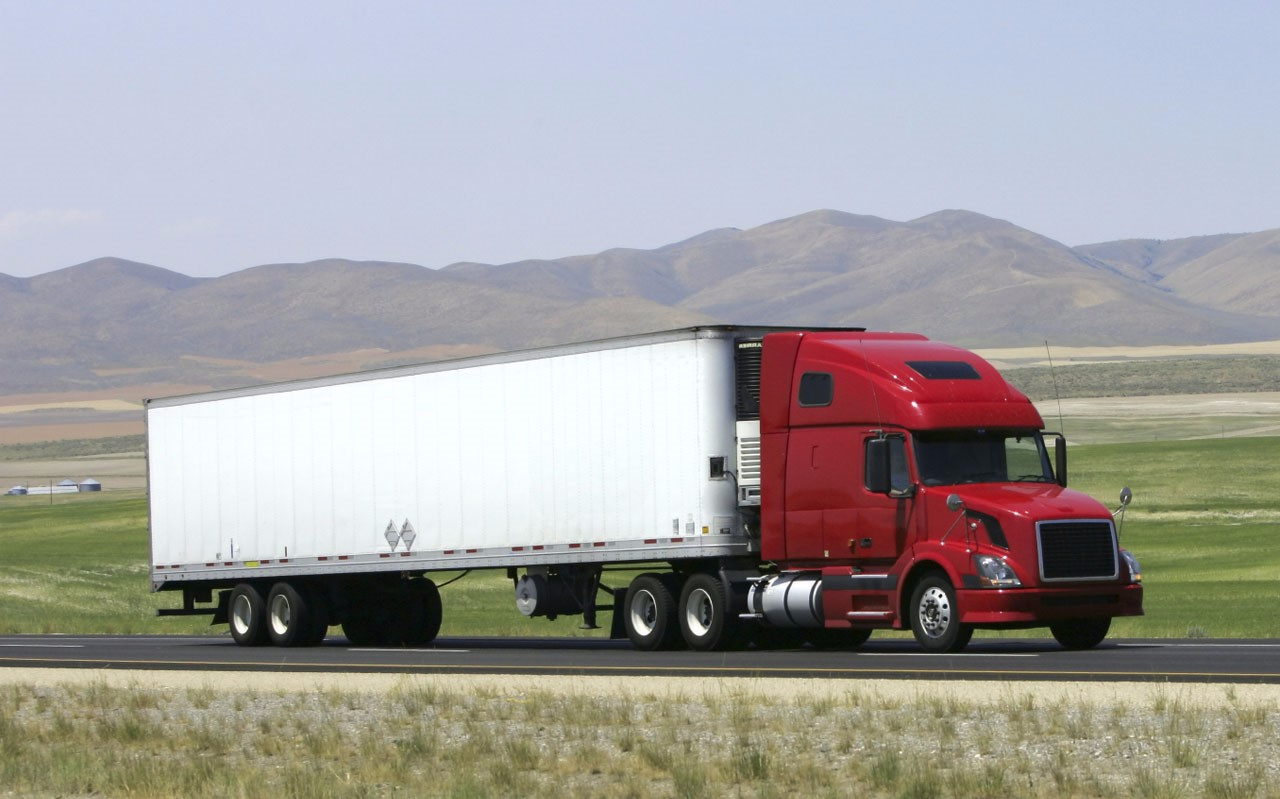
Railway transport: involve the carrying of goods and passengers by trains. Railways transport industries is owned by the Tanzania railway authority (TRA) which operate central area Tanga lines as well as TANZANIA ZAMBIA RAILWAY AUTHORLITY (TAZARA) which operate services from Dar es Salaam to tunduma-Tanzania then to Kampiliposhi-Zambia.
Advantages:
- It facilitate long distance travel and transport of bulky goods which are not easily transported through motor vehicles.
- It is a quick and more regular form of transport because it helps in the transportation of goods with speed and certainty.
- It helps in the industrialization process of a country by easy transportation of coal and raw-materials at a cheaper rate.
- It helps in the quick movement of goods from one place to another at the time of emergencies like famines and scarcity.
- It encourages mobility of labour ad thereby provides a great scope for employment.
- Railway is the safest form of transport. The chances of accidents and breakdown of railways are minimum as compared to other modes of transport. Moreover, the traffic can be protected from the exposure to sun, rain snow etc.
- The carrying capacity of the railways is extremely large. Moreover, its capacity is elastic which can easily be increased by adding more wagons.
- It is the largest public undertaking in the country. Railways perform many public utility services. Their charges are based on charge what the traffic can bear principles which helps the poor. In fact, it is a national necessity.
DEMERITS:
- The railway requires a large investment of capital. The cost of construction, maintenance and overhead expenses are very high as compared to other modes of transport. Moreover, the investments are specific and immobile. In case the traffic is not sufficient, the investments may mean wastage of huge resources.
- Another disadvantages of railway transport is its inflexibility. It routes and timings cannot be adjusted to individual requirements.
- Rail transport cannot provide door to door service as it is tied to a particular track. Intermediate loading or unloading involves greater cost, more wear and tear and wastage of time. The time cost of terminal operations are a great disadvantage of rail transport.
- As railways require huge capital outlay, they may give rise to monopolies and work against public interest at large. Even if controlled and managed by the government, lack of competition may breed in inefficiency and high costs.
- Railway transport is unsuitable and uneconomical for short distances and small traffic of goods.
- It involves much time and labour in booking and taking delivery of goods through railways as compared to motor transport.
- Because of huge capital requirements and traffic, railways cannot be operated economically in rural areas. Thus, large rural areas have no railway even today. This causes much inconvenience to the people living in rural areas.
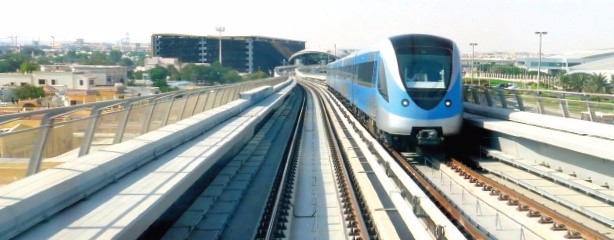
Air transport: This involves the movement of goods and passengers by aeroplanes.In Tanzania, the air transport industry is operated by both the public and private sectors which are Air Tanzania company Ltd (ATCL), Precision air and Fast jet. Click the video to see more about air transport.
MERITS:
- High Speed: The supreme advantage of air transport is its high speed. It is the fastest mode of transport and thus it is the most suitable mean where time is an important factor.
- Comfortable and Quick Services: It provides a regular, comfortable, efficient and quick service.
- No Investment in Construction of Track: It does not require huge capital investment in the construction and maintenance of surface track.
- No Physical Barriers: It follows the shortest and direct route as seas, mountains or forests do not come in the way of air transport.
- Easy Access: Air transport can be used to carry goods and people to the areas which are not accessible by other means of transport.
- Emergency Services: It can operate even when all other means of transport cannot be operated due to the floods or other natural calamities. Thus, at that time, it is the only mode of transport which can be employed to do the relief work and provide the essential commodities of life.
- Quick Clearance: In air transport, custom formalities can be very quickly complied with and thus it avoids delay in obtaining clearance.
- Most Suitable for Carrying Light Goods of High Value: It is most suitable for carrying goods of perishable nature which require quick delivery and light goods of high value such as diamonds, bullion etc. over long distances.
- National Defence: Air transport plays a very important role in the defence of a country. Modern wars have been fought mainly by aeroplanes. It has upper hand in destroying the enemy in a very short period of time. It also supports over wings of defence of a country.
In spite of many advantages, air transport has the following limitations:
- Very Costly: It is the costliest means of transport. The fares of air transport are so high that it is beyond the reach of the common man.
- Small Carrying Capacity: Its carrying capacity is very small and hence it is not suitable to carry cheap and bulky goods.
- Uncertain and Unreliable: Air transport is uncertain and unreliable as it is controlled to a great extent by weather conditions. Unfavourable weather such as fog, snow or heavy rain etc. may cause cancellation of scheduled flights and suspension of air service.
- Breakdowns and Accidents: The chances of breakdowns and accidents are high as compared to other modes of transport. Hence, it involves comparatively greater risk.
- Large Investment: It requires a large amount of capital investment in the construction and maintenance of aeroplanes. Further, very trained and skilled persons are required for operating air service.
- Specialised Skill: Air transport requires a specialised skill and high degree of training for its operation.
- Unsuitable for Cheap and Bulky Goods: Air transport is unsuitable for carrying cheap, bulky and heavy goods because of its limited capacity and high cost.
- Legal Restrictions: There are many legal restrictions imposed by various countries in the interest of their own national unity and peace.
Water transport: This involves the movement of goods and passengers by sea,canals,rivers, and lakes.
Advantages of water transport:
- Low Cost:Rivers are a natural highway which does not require any cost of construction and maintenance. Even the cost of construction and maintenance of canals is much less or they are used, not only for transport purposes but also for irrigation, etc. Moreover, the cost of operation of the inland water transport is very low. Thus, it is the cheapest mode of transport for carrying goods from one place to another.
- Larger Capacity:It can carry much larger quantities of heavy and bulky goods such as coal, and, timber etc.
- Flexible Service:It provides much more flexible service than railways and can be adjusted to individual requirements.
- Safety:The risks of accidents and breakdowns, in this form of transport, are minimum as compared to any other form of transport.
Disadvantages of water transport:
- Slow:Speed of Inland water transport is very slow and therefore this mode of transport is unsuitable where time is an important factor.
- Limited Area of Operation:It can be used only in a limited area which is served by deep canals and rivers.
- Seasonal Character:Rivers and canals cannot be operated for transportation throughout the year as water may freeze during winter or water level may go very much down during summer.
- Unreliable:The inland water transport by rivers is unreliable. Sometimes the river changes its course which causes dislocation in the normal route of the trade.
- Unsuitable for Small Business:Inland water transport by rivers and canals is not suitable for small traders, as it takes normally a longer time to carry goods from one place to another through this form of transport.
Containerization is a system of intermodal freight transport using intermodal containers (also called shipping containers and ISO containers) made of weathering steel. The containers have standardized dimensions. They can be loaded and unloaded, stacked, transported efficiently over long distances, and transferred from one mode of transport to another—container ships, rail transport flatcars, and semi-trailer trucks—without being opened. The handling system is completely mechanized so that all handling is done with cranes and special forklift trucks. All containers are numbered and tracked using computerized systems.
The system, developed after World War II, dramatically reduced transport costs, supported the post-war boom in international trade, and was a major element in globalization. Containerization did away with the manual sorting of most shipments and the need for warehousing. It displaced many thousands of dock workers who formerly handled break bulk cargo. Containerization also reduced congestion in ports, significantly shortened shipping time and reduced losses from damage and theft.
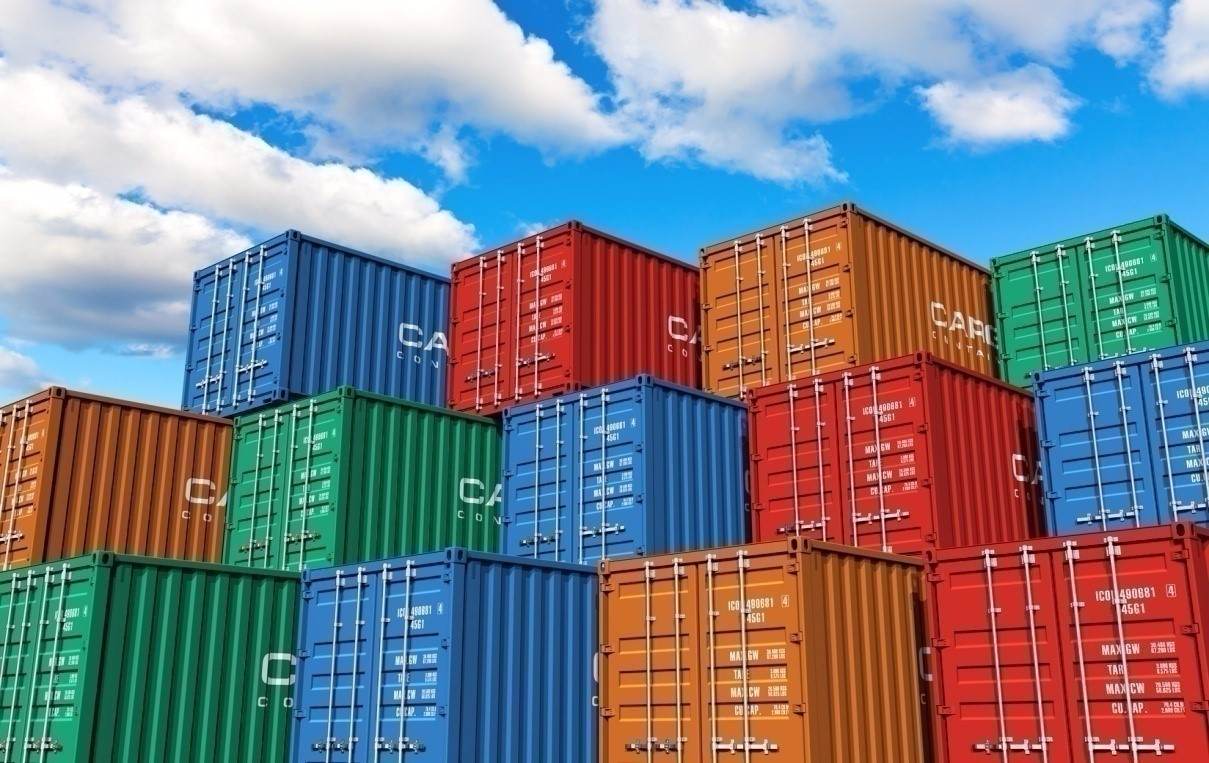
The Benefits of Containerization
The benefits of containerization take place over three main dimensions:
- Transport costs. The main transports costs benefits of containerization are jointly the outcome of lower transhipment costs and economies of scale applied to maritime shipping and terminal operations. Since containerized cargo is subject to less damage as well as lower theft levels, insurance rates are generally lower. Another significant benefit is that the container itself becomes the minimal load unit, implying that a wider range of exporters and importers can get access to international markets as the minimal entry unit, a single container load, becomes affordable.
- Service level. Containerized transport chains tend to be more reliable since the modes involved are more consistent in their service timeframe. Intermodal operations are much faster, implying that the same assets can be used more frequently. Containerized services have therefore a higher service frequency, which facilitates supply chain management.
Difference between Various Transport Documents
Distinguish the various transport documents
The main documents used in Transportation.
Bill of lading: Is a detailed list of a shipment of goods inform of a receipt given by the carrier to the person consigning the goods..
- The bill of lading is the most important export document whenever goods are sent by ship. It is issued by the shipping company.
- The key information in a bill of lading (See diagram of a bill of lading below) is as follows:
- (a) The name of the shipping company.(b) The name of the shipper (beneficiary) or his agent.(c) The name of the carrying vessel. (d) The names of the ports of shipment and discharge. (e) The identification (shipping) marks and numbers.(f) The number of containers, cases, packages or individual items. (g) A description of the goods in general terms consistent with the description of the goods in the letter of credit. (h) Evidence that the goods have been received for shipment or shipped (loaded) on board and its date. (i) The name of the consignee (if not made out 'to order') and also the name and address of the 'notify party' wherever applicable. (j) Whether freight has been prepaid or payable at destination. (k) The number of originals issued (A bill of lading is normally issued in a set of three originals; anyone of which may be used to take delivery and possession of goods. It is important that the consignee must secure all the originals.) (1) The date of issuance and the signature of the ship's master or the carrier or his agent.
- 3. Bills of lading are normally issued in a 'set' of two or more transferable copies, all of which must be signed by the master of the ship who makes a note on the bills of lading, of the number of copies issued and any damages to the goods taken on board. He then keeps one copy for reference. The other copies are sent to the foreign importer by separate mail or returned to the exporter (consignor).
- 4. However, if the exporter has arranged for the importer to open a letter of credit in the exporter's favour in a local bank, then the bills of lading together with the other shipping documents such as the invoice, the consular invoice, the marine insurance policy and a certificate of origin must be lodged by the exporter at the local bank, together with the bill of exchange.
- 5. It is one of the documents that have to be submitted to the advising bank before the shipper can secure payment in the letter of credit.
- 6. The functions of a bill of lading are as follows:(a) It acts as an advice note indicating the quantity and description of goods sent by a named ship. (b) It is a receipt of goods in good condition on board, signed by the master of the ship. Any damage to goods is noted. (c) It is evidence of a contract of carriage between the shipper and the ship owner. (d) (i) It is a document of title to goods described therein. This means that the holder of the bill of lading can claim the goods when he hands it over to the Port Authority at the port of discharge. (ii) When delivery of goods has taken place, all other copies of the bill of lading are rendered invalid.(e) Since it is a document of title it can be used as a basis for negotiating for a letter of credit from the bank. (f) (i) It informs the customs authorities of the type of imports/exports and the country of origin or destination respectively. (ii) It allows the customs to see at a glance whether the imports or exports are taxable. (iii) It helps in the recording of statistics.(g) It may be used as a document in support in the event of an insurance claim.
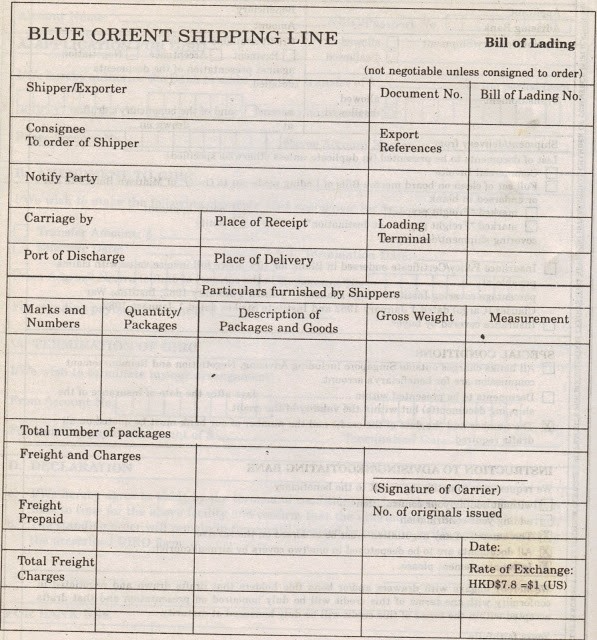
A bill of lading is used whenever goods are sent by ship. It is signed by the master of the ship or by an agent on behalf of the shipping company. The description of the goods should be consistent with the other documents such as the invoice, insurance policy, etc. Freight charges are to be calculated by the shipping company.
Consignment note / Delivery note;
- 1. It is sometimes called a rail and road consignment note or a delivery note. It is normally prepared by the road/rail transport company or a freight forwarder.
- 2. The key information in a consignment note/delivery note (See diagram of a delivery note below) is as follows: (a) The name and address of the sender (consignor). (b) The name and address of the recipient (consignee). (c) The number of packages or cases. (d) The marks and numbers on the packages or cases. (e) A brief description of the goods. (f) The place of departure and the date of departure. (g) The time of collection and delivery, (h) The time of arrival. (i) The type of haulier and the vehicle number. (j) The signature of the carrier, (if it’s a Rail Consignment Note, it is stamped by the Station master). (k) The freight charged.
- 3. The functions of a delivery note are as follows: (a) This is an advice note, indicating the quantity and description of goods being dispatched on a certain date by the named road or rail transport agency. (b) It is evidence of a contract of carriage but is not negotiable. (c) It is not a document of title but should be dispatched with other documents for it shows the date of dispatch of the goods which is useful for exchange and import control purposes. (d) It is a receipt for goods and a document for delivery. (e) It is also on a note of freight charges.
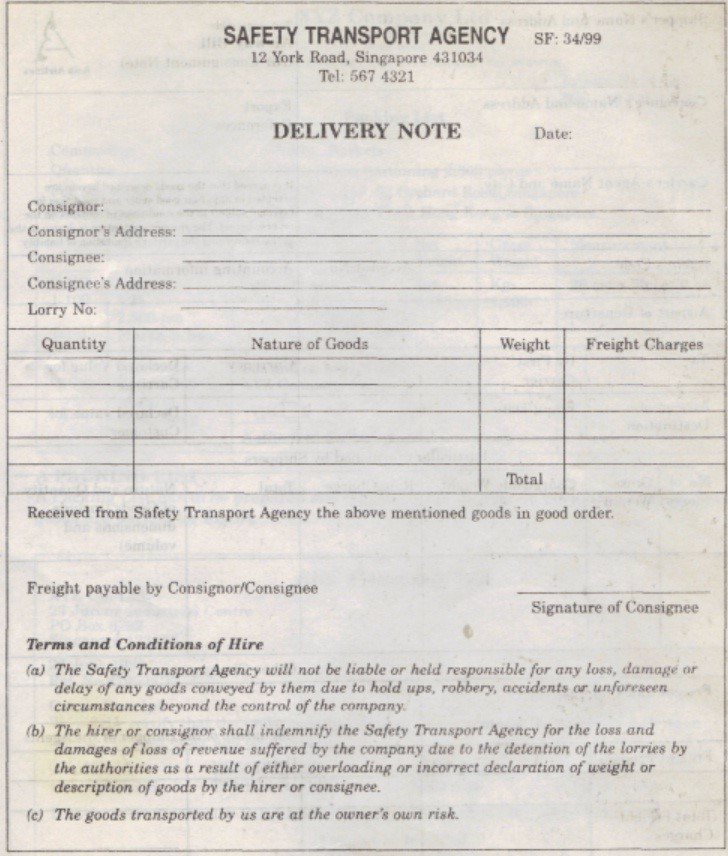
Airway bill/Air consignment note
- 1. An airway bill is a very important document used whenever goods are sent by air.
- 2. An airway bill is issued by an airline company in a set of 12 copies. However, only three copies are originals — the first is for the carrier, the second for the consignee and the third is for the shipper. The balance 9 (nine) copies are retained by the airline company for administrative purposes. It corresponds to a BJ1 of Lading but it is only used when goods are sent by air.
- 3. The key information in an airway bill is as follows: (a) The name of the Airline Company or carrier. (b) The name and address of the shipper (beneficiary). (c) The names of the airports of departure and destination, flight number and actual flight date. (d) A description of the goods in general terms, its weight and the freight charged, its declared value (c) The number of pieces sent. (f) Evidence (by and authorized signature) that the goods have been received by the carrier or its agent, and the date of issuance. (g) The name and address of the consignee and also the name and city of the carrier or its agent. (h) The status of the freight charges prepaid or payable at destination.
- 4. It is normally prepared in triplicate by the consignor. The part marked for the 'Carrier' has to be signed by the consignor. The part marked for the 'Consignee' travels with the goods. The third part is signed by the carrier and returned to the consignor.
- 5. The consignee is usually the bank that issues the letter of credit, and the party to be notified when the goods arrive is the importer.
- 6. The functions of an airway bill are as follows:(a) It is an advice note indicating all the key information stated above. (b) It is evidence of contract of carriage but it is not negotiable. (c) It is not a document of title. The delivery of goods is not dependent upon the presentation of the Airway Bill but rather the goods will be delivered to the named consignee against proof of identification at the airport of destination. (d) It should be dispatched with other documents for it shows the date of dispatch which is useful for exchange and import control purposes. (e) It may be used as a receipt to be signed by the consignee on the delivery of the goods. (f) It is also a note of freight charges.
Packing list and Weight note
- These two documents are normally combined together. The weight note shows the gross weight and net weights of the goods. These must agree with that stated in other relevant documents such as the bill of lading.
- The key information in a packing list (See diagram of a packing list below) is as follows: (a) The name and address of the shipper. Generally it is prepared by the shipper using his letterhead. (b) The name and address of the consignee. (c) The name of the ship. (d) The port of departure and port of destination. (e) The marks and numbers on the packages or cases. (f) The number of packages. (g) A general description of the goods. (h) The gross and net weight of the goods, (i) The date of issuance and the invoice number. (j) The signature of the shipper or the agent as a verification of all the above information.
- The functions of a packing list are as follows: (a) This may be one of the documents that have to be submitted to the advising bank, together with the other relevant shipping documents such as the Bill of Lading, etc. according to the terms of the letter of credit before the shipper can secure payment. (b) It serves as a verification of important information of the goods shipped or transported by road haulage such as gross and net weight of the goods, details of the packaging, description of the goods as agreed upon in the contract of sale between the importer and exporter. These details must agree with that in the other documents, e.g. the bill of lading.
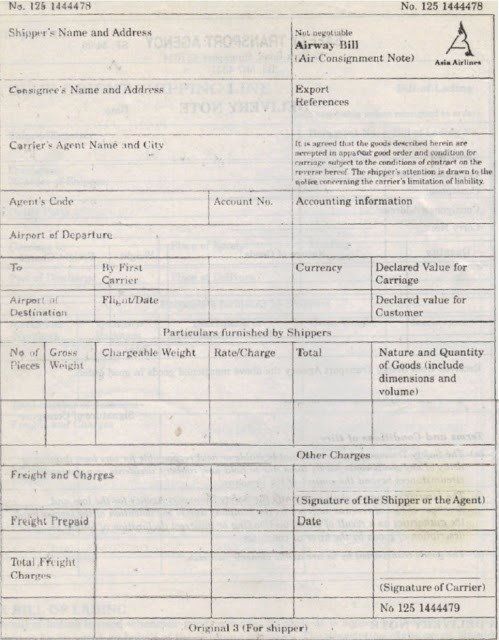
Goods received note/Cargo receipt
- The key information in a goods received note (See diagram of a goods received note below) are as follows: (a) The name and address of the consignee or his authorized agent who is claiming delivery and possession of the goods. (b) The description of the goods. (c) The number of packages of cases claimed. (d) The unit price. (e) The total value of the cargo claimed. (f) The date of issuance. (g) The signature of the consignee or its authorized agent. (h) The condition of the goods upon receipt.
- The functions of the goods received note are as follows: (a) The acknowledgement of receipt of goods at the port of destination by the consignee or its authorized agent. (b) The undertaking by the consignee that the goods were received in good order and according to the contract, thus absolving the ship owner or the port authorities from any liability to later claims for damage or theft.
Various Factors that Determine Choice of Mode of Transport
Explain the various factors that determine choice of mode of transport
Before selecting any mode of transport, you have to take into account several factors. In this concept you will be able to choose mode of transport according to the factors that will be elaborated for you. I strongly believe that, this concept will help you choosing efficient mode of transport.
FACTORS TO BE CONSIDERED IN CHOOSING A MEANS OF TRANSPORT.
- Cost of Service:The cost of transportation adds to the cost of the goods so it should always be kept in mind. Rail transport is comparatively a cheaper mode of transport for carrying heavy and bulky traffic over long distances. Motor transport is best suited and economical to carry small traffic over short distances. Motor transport saves packing and handling costs.Water transport is the cheapest mode of transport. It is suitable to carry only heavy and bulky goods over long distances where time is not an important factor. Air transport is the most costly means of transport but is particularly suited for carrying perishable, light and valuable goods which require quick delivery.
- Speed of Transport:Air transport is the quickest mode of transport but it is costliest of all. Motor transport is quicker than railways over short distances. However, the speed of railways over long distances is more than that of other modes of transport except air transport and is most suitable for long distances. Water transport is very slow and thus unsuitable where time is an important factor.
- Flexibility:Railways, water and air transport are inflexible modes of transport. They operate services on fixed routes and at replanted time schedules. The goods have to be carried to the stations, ports and airports and then taken from there. Motor transport provides the most flexible service because it is not tied to fixed routes or time schedules. It can operate at any time and can reach the business premises for loading and unloading.
- Regularity of Service:Railway service is more certain, uniform and regular as compared to any other mode of transport. It is not much affected by weather conditions. On the other hand, motor transport, ocean transport and air transport are affected by bad weather such as heavy rains, snow, fog, storms etc.
- Safety:Safety and security of goods in transit also influence the choice of a suitable means of transport. Motor transport may be preferred to railway transport because losses are generally less in motor transport. Water transport exposes the goods to the perils of sea and, hence from safety point of view, sea transport is thought of as a last resort.
- Nature of Commodity:Rail transport is most suitable for carrying cheap, bulk and heavy goods. Perishable goods which require quick delivery may be carried through motor transport or air transport keeping in mind the cost and distance.
- Other Considerations:A number of special services such as warehousing, packing, loading and unloading are also taken into consideration while deciding about a mode of transport. From the above discussion it is clear that each mode of transport is suited for a particular type of traffic.The rail transport is particularly suited for carrying heavy and bulky goods over long distances. Motor transport is suitable for carrying small consignments over short distances. Air transport is suited to light and precious articles which are to be delivered quickly. Ocean transport is appropriate for carrying heavy bulky goods over long distances at the cheapest possible cost.
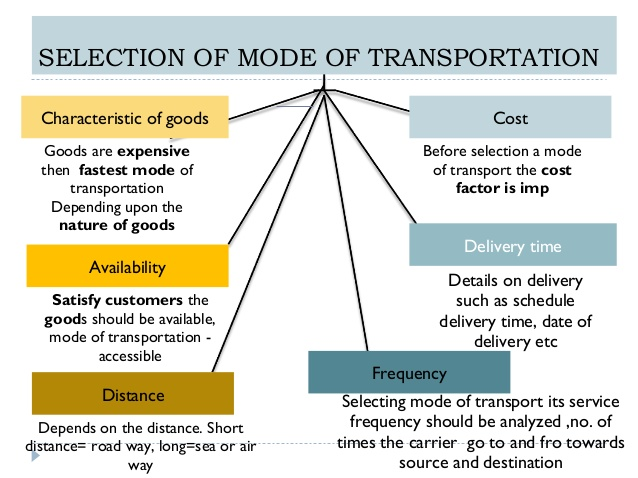
Exercise 1
QUIZ
- Describe the advantages of transportation.
- Mention and explain advantages of containerization.
- Assess the importance of air transport over road transport
Example 1
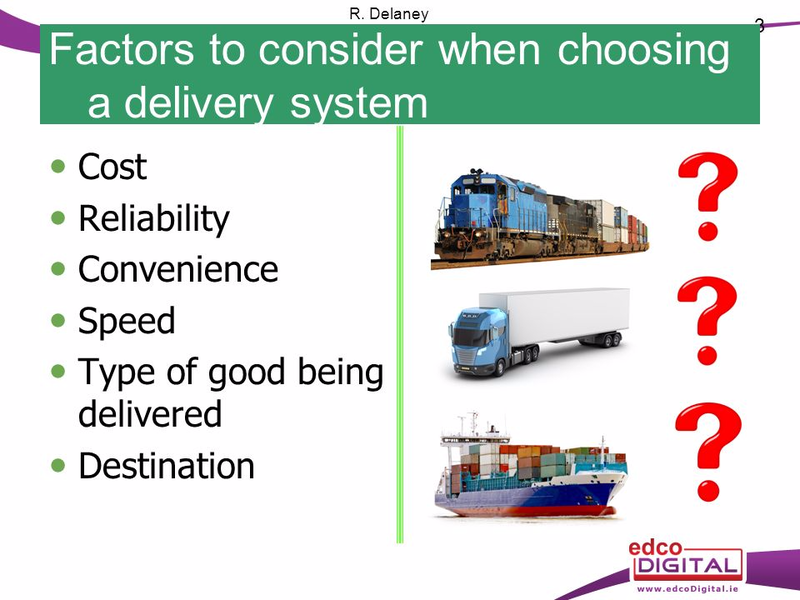







EmoticonEmoticon